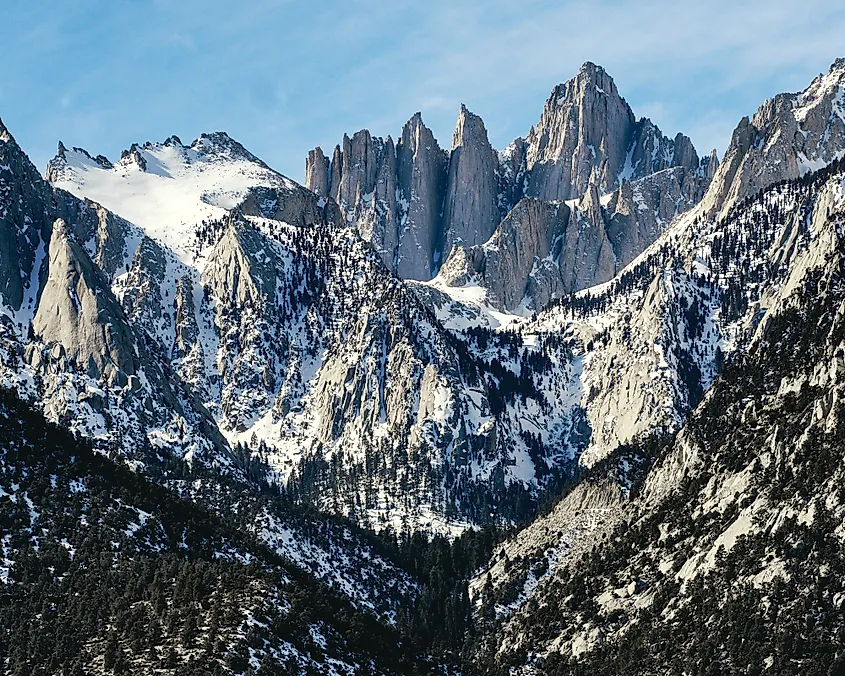The Sierra Nevada mountain
- Get link
- X
- Other Apps
The Sierra Nevada mountain range, located in California, USA, is a majestic and iconic natural wonder that spans approximately 650 kilometers (400 miles). Renowned for its towering peaks, pristine alpine lakes, and diverse ecosystems, the Sierra Nevada is a haven for outdoor enthusiasts, nature lovers, and adventurers. In this article, we will explore the geological formation, ecological significance, recreational opportunities, and cultural heritage of the Sierra Nevada mountains.
Geological Formation:
The Sierra Nevada range was formed through the gradual uplift and subsequent erosion of ancient granitic rocks over millions of years. The process began around 140 million years ago as tectonic forces pushed and uplifted the earth's crust. The range continued to evolve through volcanic activity and glaciation during the Ice Ages. The result is a spectacular landscape of rugged peaks, deep canyons, and glaciated valleys.
Mountain Peaks and Natural Features:
The Sierra Nevada is home to numerous towering peaks, with Mount Whitney standing as the highest summit in the contiguous United States, reaching an elevation of 4,421 meters (14,505 feet). Other notable peaks include Mount Langley, Mount Williamson, and Mount Russell. The range is characterized by its granite formations, such as Half Dome and El Capitan in Yosemite National Park, which attract rock climbers from around the world.
The Sierra Nevada is also known for its stunning alpine lakes, including Lake Tahoe, the largest alpine lake in North America. These pristine bodies of water offer opportunities for boating, fishing, swimming, and scenic hikes along their shores. Additionally, the range is adorned with cascading waterfalls, such as Yosemite Falls and Bridalveil Fall, adding to its natural splendor.
Ecological Significance:
The Sierra Nevada is a biodiversity hotspot, harboring a remarkable array of plant and animal species. The range encompasses various ecological zones, ranging from oak woodlands and chaparral to coniferous forests and alpine meadows. The lower elevations are home to diverse flora, including oak trees, manzanitas, and wildflowers, while higher elevations feature majestic forests of giant sequoias, ponderosa pines, and Douglas firs.
The range is also a sanctuary for a wide range of wildlife. Species such as black bears, mule deer, mountain lions, bobcats, and coyotes roam the forests and canyons. Birdwatchers can spot numerous bird species, including bald eagles, peregrine falcons, and California condors. The Sierra Nevada is also known for its unique amphibians, such as the Sierra Nevada yellow-legged frog and the Yosemite toad.
Recreational Opportunities:
The Sierra Nevada offers endless recreational opportunities for outdoor enthusiasts. Hiking and backpacking are popular activities, with a network of trails winding through the range, including portions of the Pacific Crest Trail and the John Muir Trail. Mountaineering and rock climbing attract adventurers seeking the thrill of scaling the granite cliffs and peaks.
The region is also famous for its winter sports, with world-class ski resorts like Mammoth Mountain and Squaw Valley providing excellent downhill skiing and snowboarding opportunities. Cross-country skiing, snowshoeing, and snowmobiling are also popular winter activities. Additionally, the Sierra Nevada is a paradise for water sports, with whitewater rafting, kayaking, and fishing attracting enthusiasts to its rivers and lakes.
Cultural Heritage:
The Sierra Nevada holds significant cultural value for indigenous tribes, including the Mono, Paiute, and Washoe peoples. These tribes have longstanding connections to the land, maintaining their traditions and cultural practices. The mountains also played a vital role in the history of European settlement in California, as pioneers and gold miners explored and settled the region during the Gold Rush era.
The range is home to several national parks and protected areas, including Yosemite National Park, Sequoia National Park, and Kings Canyon National Park. These parks preserve the natural beauty of the Sierra Nevada while providing opportunities for education, recreation, and conservation. Visitors can explore the iconic landmarks, enjoy interpretive programs, and camp under the starry skies.
In conclusion, the Sierra Nevada mountain range is a natural marvel that captivates visitors with its stunning landscapes, rich biodiversity, and recreational opportunities. Whether you seek adventure in the rugged wilderness, solitude amidst alpine lakes, or cultural experiences that honor the region's heritage, the Sierra Nevada offers a truly unforgettable experience.
- Get link
- X
- Other Apps

Comments
Post a Comment